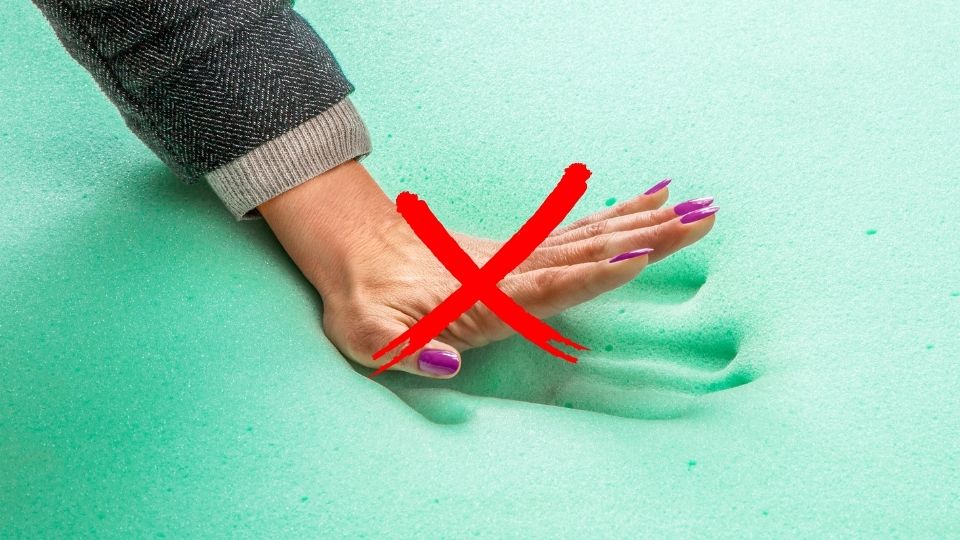Do you have persistent pain in your lower back, buttocks, and legs? Does it worsen when you sit or stand for a long period of time? You could be suffering from spinal stenosis – an increasingly common condition that causes narrowing in the canal of your spine. It impacts many people over the age of 50 due to changes in the body as we age. In some cases, mild symptoms can improve with conservative treatment options; however understanding what spinal stenosis is, its primary risk factors, and how it can be treated should bring peace-of-mind that effective management plans are available – so today let’s look at will spinal stenosis go away if you receive proper treatment?
As a general rule, while treatment options exist, such as physical therapy or surgery, it is unlikely that the condition will completely disappear without intervention. Consult with a medical professional for individualized advice. Utilizing ergonomic seat cushions can also help promote proper posture and alleviate symptoms.
Let me guide you through the discomfort of spinal stenosis. For over 30 years, I’ve been practicing chiropractic, and during that time, I’ve also trained as an ergonomist. I have a published book on posture, spoke on this subject on national tv, and have engineered several solutions to help people achieve better posture and comfort while sitting. In addition, I ran a successful Kickstarter campaign to fund the development of a set of ergonomic seat cushions. With all this experience and expertise, I’m confident I can offer some excellent advice that can help reduce or even eliminate your symptoms.
Understanding Spinal Stenosis and Its Impact
I know how you feel – spinal stenosis can be an incredibly frustrating and painful condition to deal with. As a chiropractor, I have seen numerous patients dealing with the symptoms of spinal stenosis, and I have made it my mission to help them find relief. From my clinical experience, I’ve found that spinal alignment and maintaining a balanced and strong core are crucial for managing spinal stenosis effectively.
Spinal Alignment: The Key to Relief
Another critical aspect of managing spinal stenosis is maintaining proper spinal alignment. When your spine is aligned correctly, it minimizes pressure on the nerves and discs, which can alleviate pain and discomfort. One way to promote spinal alignment is by using an expert-designed ergonomic seat cushion, especially when sitting for long periods.
In my practice, I always advise patients to use a seat cushion made with a natural latex top and a high-density base layer foam. Natural latex provides the ideal combination of support and comfort, while the high-density base layer foam ensures that the cushion maintains its shape and effectiveness over time.
I never recommend memory foam seat cushions, as they tend to lack pressure support and resilience. Additionally, memory foam is a toxic material that can become hot when you sit on it for extended periods, which is far from ideal for comfort and spinal health.
As a chiropractor, I firmly believe that strengthening your core and maintaining proper spinal alignment are central to reducing pain and discomfort associated with spinal stenosis. By incorporating these practices into your daily routine, you can take significant steps toward managing your symptoms and improving your quality of life.
Strengthening Your Core for Better Posture and Less Pain
I know how you feel when you’re dealing with spinal stenosis, and I understand that it can be an ongoing source of discomfort and frustration. Through my clinical experience, I’ve found that one effective way to help alleviate spinal stenosis symptoms is by focusing on strengthening your core muscles. A strong core not only provides support to your spine but also helps maintain proper posture, which is crucial for minimizing pain.
Let’s dive a little deeper into why a strong core is so essential. Your core muscles consist of your abdominal muscles, lower back muscles, pelvic floor, and the muscles around your hips. When these muscles work together harmoniously, they provide stability to your spine, allowing you to sit, stand, and move without putting undue strain on your back. In turn, this can lead to reduced pressure on the nerves affected by spinal stenosis and ultimately, less pain.
To build a balanced and strong core, it’s important to include a variety of exercises targeting all the core muscles. Here are a few exercises you can try:
- Planks: Hold your body in a straight line, with your weight on your forearms and toes. Maintain this position for 30 seconds to 1 minute, engaging your core muscles throughout.
- Dead bugs: Lie on your back with your arms extended toward the ceiling and your knees bent at 90 degrees. Slowly lower your right arm and left leg simultaneously, keeping your lower back pressed into the floor. Return to the starting position and repeat with the opposite limbs.
- Bird dogs: Begin on your hands and knees, with your wrists under your shoulders and your knees under your hips. Extend your right arm and left leg simultaneously, maintaining balance and keeping your back straight. Return to the starting position and repeat with the opposite limbs.
Finding Comfort in Sitting with an Ergonomic Seat Cushion
Sitting can be particularly challenging for those with spinal stenosis, as it can place additional pressure on the nerves, leading to pain in the knees and other areas. I always advise my patients to use an expert-designed ergonomic seat cushion to help alleviate this discomfort. A high-quality ergonomic seat cushion should be made with a natural latex top and a high-density base layer foam, which provides excellent support and resilience.
All Day Comfort & Support
Creating an Ergonomic Chair: Tips and Suggestions
To deal with your situation best, it’s essential to focus on various aspects, with chair adjustment being a crucial one. There are different methods to achieve this, such as incorporating an ergonomic seat cushion and lumbar support. These additions can alleviate pressure on your back and legs, enhancing comfort and posture during extended seated. Also, ensure your feet are flat on the ground and there is adequate space between your chair and desk. By following these suggestions, any standard hard chair can be transformed into an ergonomic haven that contributes to long-term health and well-being.
Ergonomic Seat Cushion
I explain the concept of my ergonomic design on a TV show HERE
An ergonomic seat wedge (above) can be employed to align your spine and improve balance. This well-designed natural latex seat cushion aids in strengthening core muscles while easing tension in other body areas, such as the shoulders and neck. Moreover, sitting upright is gentler on your hips and knees, as it engages more muscle groups simultaneously compared to leaning back against something soft. This upright posture prevents stress-inducing habits that people may unknowingly adopt while working.
The Trouble with Memory Foam
I understand that many people turn to memory foam cushions for comfort, but I never recommend them for my patients. I believe that memory foam lacks the pressure support and resilience that those with spinal stenosis need to maintain proper spinal alignment. Additionally, memory foam can be made from chemicals that can become uncomfortably hot when you sit on it for long periods.
Partnering with a Chiropractor for Spinal Stenosis Management
I’ve written a complete hands-on review about the best sitting position for sciatica, and here is what I tested best with my sciatica patients.
As a chiropractor, I believe that collaboration and open communication with my patients are key to successfully managing spinal stenosis. By working together to ensure proper spinal alignment and a strong, balanced core, we can help you regain control over your life and find relief from the pain and discomfort caused by spinal stenosis. Remember, you don’t have to face this journey alone – I’m here to help and support you every step of the way.
Best Seat Cushion for Spinal ComfortAxial Ergonomic Seat Cushion® | Seat Chair Wedge
Quick Guide: A 30-Second Summary

All Day Comfort & Support
Product Name
Axial Designs™ Seat Cushion
Price
$149
Warranty
1 Year
Type
Posture Wedge
Top Layer
100% Natural Latex (Molded)
Bottom Layer
High-Density Foam
Top Material
Isometric Grippy Vegan Leather
Bottom Material
Non-Slip Material
Side Material
3D Breathable Fabric
Severe Spinal Stenosis L4-L5 Symptoms
I know how you feel when dealing with severe spinal stenosis at the L4-L5 level. It can be incredibly frustrating and painful. Common symptoms you might experience include lower back pain, sciatica, leg pain, numbness, and weakness. You may also notice a change in your gait, which can make walking and other daily activities difficult. But don’t worry; we’ll explore ways to help alleviate these symptoms and improve your quality of life.
What Are the Final Stages of Spinal Stenosis
In the final stages of spinal stenosis, symptoms can become more pronounced and debilitating. You might experience severe pain, decreased mobility, and loss of balance. In some cases, bowel and bladder dysfunction may occur. But remember, every case is unique, and here’s what I found out from my clinical experience: maintaining spinal alignment and a balanced, strong core can help manage these symptoms and make sitting more comfortable without causing pain in the knees.
Spinal Stenosis Exercises to Avoid
While exercising can be beneficial for spinal stenosis patients, there are certain activities you should avoid. These include exercises that involve excessive bending, twisting, or heavy lifting, as they can put additional strain on your spine. Instead, focus on gentle activities like walking, swimming, or yoga. And don’t forget to incorporate core-strengthening exercises, as a strong core can help support your spine and alleviate pain.
Spinal Stenosis and Walking Problems
Spinal stenosis can lead to walking problems due to pain, numbness, and muscle weakness. You might find that you’re unable to walk long distances or have difficulty maintaining balance. Here’s what I found out from my clinical experience: using an expert-designed ergonomic seat cushion made with a natural latex top and a high-density base layer foam can help you maintain proper posture while sitting, which in turn can alleviate walking problems related to spinal stenosis.
What Is the Best Painkiller for Lumbar Spinal Stenosis
As a chiropractor, I always recommend exploring non-pharmacological treatments for spinal stenosis first. However, if you need pain relief, over-the-counter painkillers like acetaminophen, ibuprofen, or naproxen can help. For more severe pain, your doctor may prescribe stronger painkillers or muscle relaxants. But remember, it’s crucial to address the root cause of your pain, which in most cases involves improving spinal alignment and strengthening your core muscles.
While spinal stenosis may not go away completely, there are ways to manage and alleviate symptoms. By focusing on spinal alignment, maintaining a strong core, and using supportive tools like ergonomic seat cushions, you can improve your quality of life and enjoy daily activities with less pain.
All Day Comfort & Support
Conclusion
Spinal stenosis is a condition that can cause extreme pain and discomfort, but there are ways to find relief. It is important for someone who thinks they may be suffering from spinal stenosis to seek the advice of a medical professional as soon as possible. While it’s great news that spinal stenosis can sometimes simply go away, an individual should not rely solely on this outcome.
With the proper treatment – either traditional or alternative – an individual has options to reduce or manage their pain and begin to reclaim their life. Seeking help right away can make all the difference in an individual’s long-term outlook. So if you’re dealing with any of the symptoms of spinal stenosis, don’t wait another moment to visit a doctor or care provider; take your well-being into your own hands now so you can have peace of mind knowing that you’ve done everything you can to ensure your health and safety in this difficult time.






